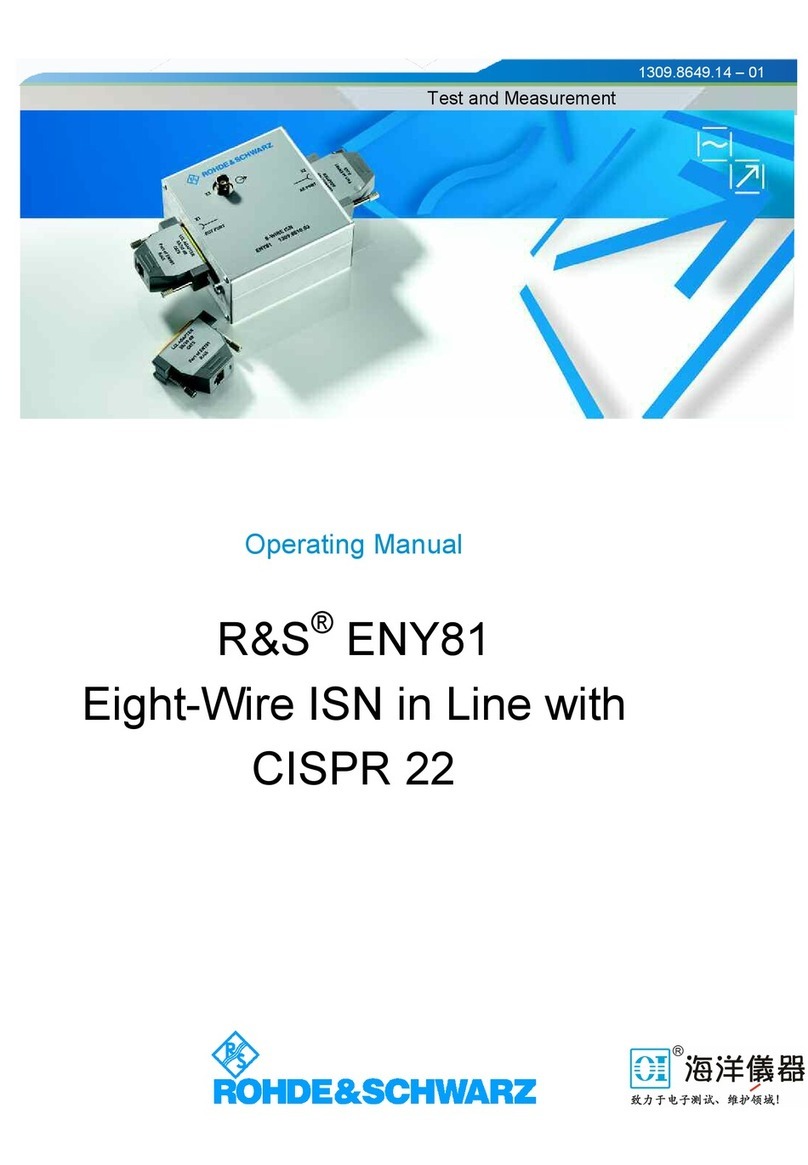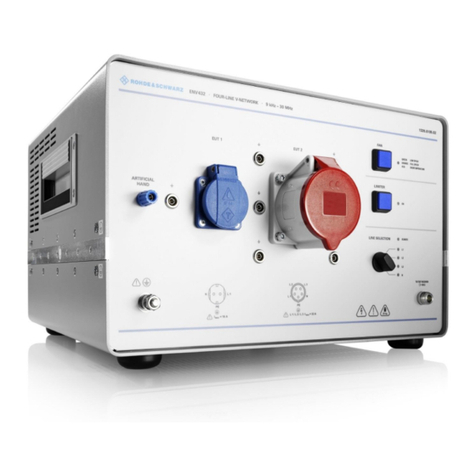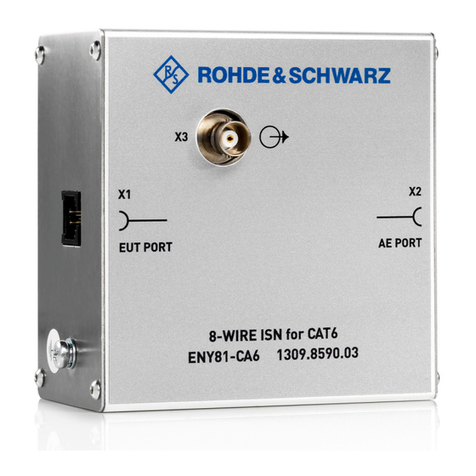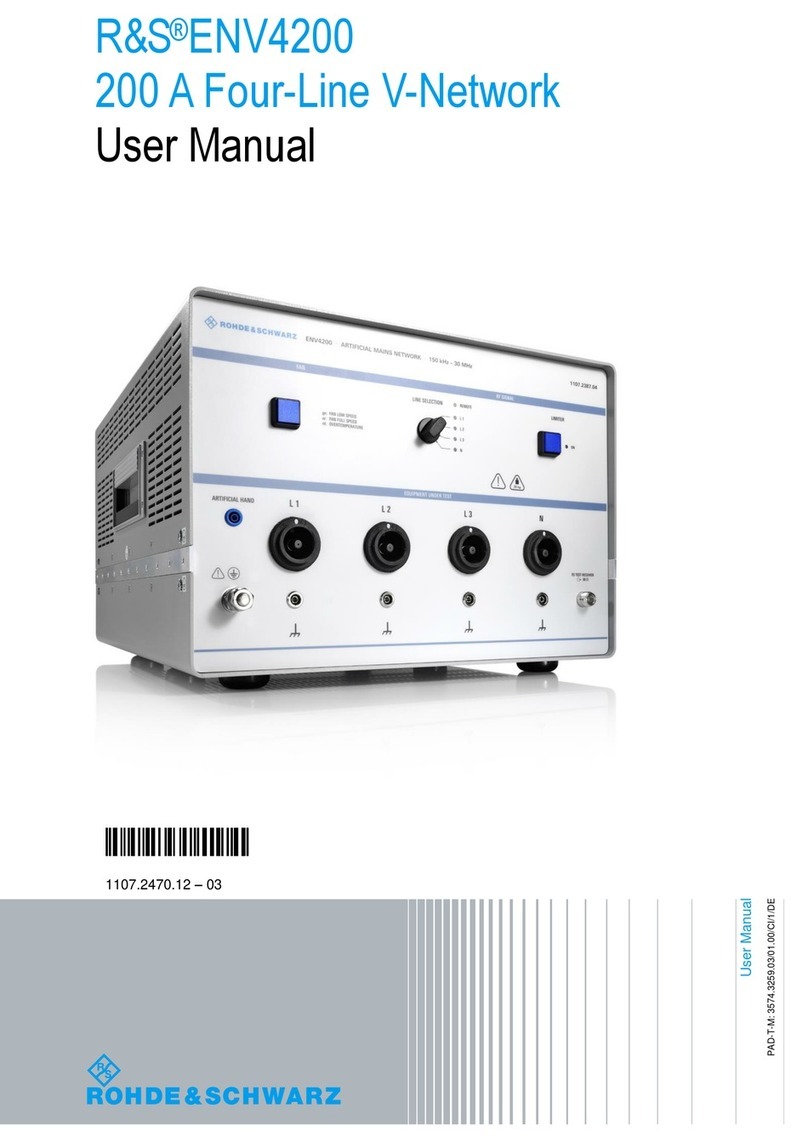
Safety and regulatory information
R&S®ENV216
4User Manual 5201.6693.14 ─ 05
tion such as the data sheet, manuals and the printed safety instructions. If you are
unsure about the appropriate use, contact Rohde & Schwarz customer service.
LISNs are designed according to CISPR 16-1-2 (EN 55016-1-2) and do not meet the
permissible limit for the leakage current as defined in EN 61010-1. In addition, LISNs
do not provide basic insulation, rated as measurement category II (protection class 1).
Therefore, only connect, set up and use LISNs if you are an electrically skilled person.
Electrically skilled persons have the relevant education and experience to enable them
to perceive risks and to avoid hazards that electricity can cause.
These users also need sound knowledge of at least one of the languages in which the
user interfaces and the product documentation are available.
LISNs can pose hazardous and even life-threatening risks:
●Electrical shock because of a high leakage current and live parts if the LISN is not
grounded.
●Electrical shock because the LISN does not have a fuse in the measuring circuit.
●Burns and fire hazard caused by overheating of the housing. Overheating can
occur if the ventilation is insufficient or if the cables' cross-section is too small.
If any part of the LISN is damaged or broken, stop using the LISN. Never open the cas-
ing of the LISN. Only service personnel authorized by Rohde & Schwarz are allowed to
repair the LISN. Contact Rohde & Schwarz customer service at http://www.rohde-
schwarz.com/support.
Lifting and carrying the product
Look up the weight in the data sheet. If the product is heavy, you cannot move or carry
it on your own. A single person can only carry a maximum of 18 kg safely, depending
on age, gender and physical condition. To move the product safely, you can also use
lifting or transporting equipment such as lift trucks or forklifts. Follow the instructions
provided by the lifting or transporting equipment manufacturer.
Choosing the operating site
Only use the LISN indoors in rooms equipped with a protective earth connection (for
example EMC test rooms). The product casing is not waterproof and water that enters
the casing can electrically connect the casing with live parts. This can lead to electric
shock, serious personal injury or death if you touch the casing.
You can operate the product up to an altitude of 2000 m above sea level. The product
is suitable for pollution degree 2 environments where nonconductive contamination can
occur.
For more information on environmental conditions such as ambient temperature and
humidity, see the data sheet.
Setting up the product
Always place the LISN on a stable, flat and level surface with the bottom of the LISN
facing down. Make sure that the air supply is not obstructed from any side.
Place the LISN on a nonflammable base, for example, a metal plate, to prevent a fire if
the ventilation system fails or if it gets too hot.
Safety instructions


































